




Direct drive means that the motor connects directly onto the back of the drum shaft, traditionally this was done by using a belt.
Inverter means that there is an electronic drive control system between the incoming power supply and the outgoing power to the induction motor.
The advantage of Inverter drive is that the speed and China motor for blender manufacturerstorque of the motor can be precisely controlled so the result is a very quiet and smooth motor action. It also doesn’t have traditional brushes so doesn’t suffer from sparking or brush wear. The downsides are costs if they go wrong as the circuit board and induction motor are expensive.
With some products like an AC unit inverter motor control representsMotor For Cooker Hood Manufacturers a big efficiency gain and running cost saving but there is little to be gained efficiency wise from using it in a washing machine. It is nice to not have the high rpm motor scream though.
Belts are also very reliable now so direct drive offers no real advantage imho.
In an era where energy efficiency and precision control are paramount, inverter motors have emerged as a cornerstone technology in numerous industries. These advanced motor systems offer a stark departure from traditional fixed-speed motors, providing unparalleled control over motor speed and, consequently, significant energy savings. This guide will delve into the world of inverter motors, exploring their fundamental components, operational principles, and wide-ranging applications.
At its core, an inverter motor is an electric motor system where the speed and torque are precisely controlled by an electronic device known as an inverter or Variable Frequency Drive (VFD). Unlike conventional motors that operate at a fixed speed determined by the power supply's frequency, an inverter motor's speed can be adjusted continuously and accurately.
The system is comprised of two primary components:
The Motor: This is typically a standard AC motor, often a three-phase induction motor, though synchronous motors can also be used. The motor itself is designed to handle the variable frequency and voltage supplied by the inverter.
The Inverter (VFD): This is the electronic drive that serves as the brain of the system. It takes the incoming AC power from the mains and converts it into a variable frequency and voltage output, which it then supplies to the motor. This allows for precise and dynamic control over the motor's operation.
The secret to an inverter motor's flexibility lies in the operation of the Variable Frequency Drive (VFD). A traditional AC motor's speed is directly proportional to the frequency of the power supply. A VFD manipulates this relationship by dynamically altering the frequency and voltage of the power delivered to the motor. The process can be broken down into three main stages:
AC to DC Conversion: The VFD first takes the standard AC power from the grid (e.g., 60 Hz) and rectifies it into DC power. This is achieved using a rectifier bridge, which converts the alternating current into a constant, direct current.
DC to AC Conversion: The VFD then uses a series of power transistors (like insulated-gate bipolar transistors or IGBTs) to rapidly switch the DC power on and off. This process, known as pulse width modulation (PWM), reconstructs the DC power back into a new AC waveform.
Frequency and Voltage Adjustment: The VFD controls the switching speed of the transistors to generate an output AC power with a new, variable frequency and voltage. By increasing or decreasing the frequency of the output power, the VFD can directly and smoothly increase or decrease the motor's speed. Simultaneously, the VFD also adjusts the voltage to maintain a consistent torque-to-speed ratio, ensuring efficient operation across the entire speed range.
The adoption of inverter motors has grown exponentially due to the compelling advantages they offer over traditional, fixed-speed motor systems. From significant energy savings to enhanced operational performance, these benefits contribute to a more efficient and sustainable industrial landscape.
One of the most significant advantages of an inverter motor is its superior energy efficiency, particularly in applications with variable loads. Traditional motors operate at full speed regardless of the actual demand, which leads to substantial wasted energy when the load is low. An inverter motor, on the other hand, can precisely match the motor's speed to the exact requirements of the application.
For instance, in pumps and fans, the relationship between motor speed and power consumption is not linear; it follows the cube law. This means that a small reduction in motor speed results in a dramatic reduction in energy consumption. By reducing a fan's speed by just 20%, an inverter motor can cut the energy usage by nearly 50%. This inherent energy-saving motor characteristic makes inverter motors a cornerstone of modern industrial motor design and a key component for companies aiming to reduce power consumption and operational costs.
The ability to accurately and continuously adjust motor speed is a game-changer for many industrial processes. A Variable Frequency Drive (VFD) provides a level of motor control that fixed-speed motors simply cannot match. This precision is critical for maintaining consistency and quality in manufacturing, where processes like mixing, conveying, and cutting require exact speed synchronization.
By allowing for fine-tuned adjustments, inverter motors can optimize process control, reduce product defects, and improve overall throughput. This enhanced control not only boosts productivity but also allows for greater flexibility in responding to changing production demands.
The controlled operation of an inverter motor system significantly reduces the mechanical and electrical stress on the motor and connected equipment. A traditional motor experiences high stress every time it starts and stops, which can lead to premature wear and tear on components like bearings, windings, and gears.
Because inverter motors utilize a soft-starting mechanism (as discussed below), they avoid the sudden jolts and high currents that are typical of traditional motor startups. By operating at the optimal speed for the load, the motor runs cooler and with less vibration. This gentle, controlled operation leads to lower maintenance costs and a substantially extended motor life, maximizing the return on the initial investment.
When a traditional motor starts, it draws a massive amount of power from the grid, known as inrush current. This can be five to ten times greater than the motor's running current, causing voltage dips in the electrical system and placing immense stress on both the motor and the connected machinery.
Inverter motors, by contrast, employ a "soft start" feature. The VFD ramps up the frequency and voltage gradually, smoothly accelerating the motor from a standstill to its desired speed. This process minimizes the inrush current, preventing electrical disturbances and reducing the mechanical stress on belts, gears, and couplings. This not only protects the equipment but also contributes to the stability of the entire electrical system.
While the core principle of using a Variable Frequency Drive (VFD) to control a motor remains constant, inverter motor systems can be broadly categorized into two main types based on the kind of motor used: AC and DC. The choice between them depends on the specific application's demands for efficiency, torque, and control.
AC inverter motor systems are by far the most prevalent in modern industrial and commercial applications. They leverage the reliability and widespread availability of standard AC motors. The VFD gives these motors the ability to operate at variable speeds, unlocking their full potential.
Induction Motors with VFD Control: This is the most common type of inverter motor system. Standard squirrel-cage induction motors are robust, cost-effective, and require minimal maintenance, making them ideal for a vast range of applications. When paired with a VFD, they become highly efficient, variable-speed machines suitable for everything from pumps and fans to conveyors and mixers.
Synchronous Motors with VFD Control: Synchronous motors are known for their high efficiency and precise speed tracking. Unlike induction motors, their rotor speed is exactly synchronized with the frequency of the power supply. When controlled by a VFD, these motors offer superior efficiency, especially in high-power applications, and are often used in demanding processes that require exact speed synchronization.
DC inverter motor systems, also known as DC drives, were once the dominant technology for variable-speed applications, especially those requiring high torque at low speeds. While they have been largely replaced by more efficient and cost-effective AC systems, they still hold a niche in certain specialized applications. The "inverter" in a DC system, often called a DC drive or controller, rectifies AC power into DC power and then regulates the voltage supplied to the motor to control its speed.
Compared to their AC counterparts, DC motors typically require more maintenance due to their use of brushes and commutators, which wear out over time. However, their simple control scheme and excellent torque characteristics at low speeds made them a historically popular choice before the advent of modern, high-performance AC drives.
|
Feature |
AC Induction Motor with VFD |
AC Synchronous Motor with VFD |
DC Inverter Motor |
|
Common Use |
Pumps, fans, compressors, conveyors, general industrial machinery. |
High-efficiency applications, precision positioning, high-power systems. |
Older systems, specialized low-speed, high-torque applications. |
|
Efficiency |
Very good, highly efficient in variable-speed operation. |
Excellent, often a few percentage points higher than induction motors. |
Good, but typically less efficient than modern AC systems. |
|
Cost |
Lowest overall system cost (motor and VFD). |
Higher initial cost for the motor and VFD. |
Higher maintenance costs; motor often requires more components. |
|
Maintenance |
Very low; robust motor design with no brushes. |
Low; brushless design. |
High; requires regular brush and commutator inspection and replacement. |
|
Key Advantage |
Robust, reliable, and cost-effective for a wide range of uses. |
Highest efficiency, precise speed synchronization, and high power density. |
Excellent low-speed torque and a simple control scheme. |
|
Key Disadvantage |
Less precise speed control than synchronous motors. |
Higher initial investment cost. |
High maintenance requirements; motor and drive technology are outdated. |
The versatility and efficiency of inverter motor technology have led to its widespread adoption across a diverse range of industries. By providing precise motor control and significant energy savings, these motors are revolutionizing how various systems operate.
In the industrial sector, inverter motors have become the standard for optimizing performance and reducing operational costs. Their ability to match motor speed to the load requirements makes them ideal for a variety of critical functions:
Pumps, Fans, and Compressors: These are the most common applications for inverter motors. A traditional system often runs at full speed, using throttling valves or dampers to regulate flow or pressure. By using an inverter motor, the speed of the motor is adjusted directly, reducing energy consumption dramatically. For example, a compressor can slow down during periods of low demand, saving substantial electricity.
Conveyors and Material Handling: In manufacturing and logistics, inverter motors provide smooth acceleration and deceleration, preventing sudden jolts that could damage fragile goods. Their precise control allows for synchronized movement in complex assembly lines and ensures a consistent flow of materials.
Manufacturing and Processing Equipment: From mixers and centrifuges to extruders and winders, a wide array of manufacturing equipment benefits from the fine-tuned speed and torque control offered by an inverter motor. This precision leads to higher product quality, less waste, and greater process repeatability.
Inverter motors play a crucial role in modern HVAC (Heating, Ventilation, and Air Conditioning) systems, driving the push for greater energy efficiency and comfort. Instead of running a compressor or fan at a single speed and cycling it on and off, an inverter-driven system can continuously adjust its speed.
This allows for more accurate temperature and humidity control, as the system can maintain a steady state rather than oscillating between "on" and "off." This variable speed operation not only provides a more comfortable environment but also results in substantial energy savings, as the system avoids the energy-intensive inrush current of constant starting and stopping.
The heart of an electric vehicle's powertrain is a sophisticated inverter motor system. The traction motor that drives the wheels is typically a powerful AC motor, and a high-voltage VFD (often referred to as the motor controller) takes DC power from the battery pack and converts it into the variable frequency AC power needed to propel the car.
In this application, the inverter motor system provides:
Seamless Acceleration and Deceleration: It delivers instant torque and smooth, continuous power across a wide speed range.
Regenerative Braking: A key feature of EVs, regenerative braking is made possible by the inverter motor. When the driver lifts their foot from the accelerator, the motor's polarity is reversed, causing it to act as a generator. This converts the vehicle's kinetic energy back into electrical energy, which is used to recharge the battery, thereby increasing the vehicle's range and reducing wear on the mechanical brakes.
Choosing the right inverter motor system is a critical step to ensure optimal performance, efficiency, and longevity. A well-matched motor and VFD system will deliver the intended benefits, while a mismatched system can lead to inefficiency, premature failure, and increased costs.
Before selecting a system, it's essential to thoroughly understand the requirements of the application. These factors will dictate the specifications of both the motor and the VFD.
Load Requirements and Duty Cycle: The nature of the load is a primary consideration. Is it a constant torque load (e.g., a conveyor belt) that requires consistent torque throughout the speed range, or a variable torque load (e.g., a fan or pump) where torque demand decreases with speed? Additionally, the duty cycle (continuous or intermittent operation) will influence the necessary motor size and cooling requirements.
Motor Size and Power Rating: The motor's power rating (horsepower or kilowatts) must be appropriate for the application. An undersized motor will overheat and fail, while an oversized motor will operate inefficiently. It's crucial to select a motor that can handle the maximum expected load without exceeding its thermal limits.
The inverter (VFD) and the motor are a single integrated system and must be compatible. A mismatch can result in poor performance or damage to the equipment.
Compatibility and Performance Optimization: Ensure the VFD's voltage, current, and frequency ratings align with the motor's specifications. The VFD's output must be able to properly power the motor. Additionally, modern VFDs offer advanced control methods, such as vector control, which can provide superior performance for applications requiring high torque at low speeds or precise positioning. Matching the VFD's control capabilities to the application's needs is key to performance optimization.
The operating environment can have a significant impact on the performance and lifespan of the inverter motor system. It's crucial to consider these factors during the selection process.
Temperature, Humidity, and Altitude: High ambient temperatures can reduce the cooling effectiveness of both the motor and the VFD, potentially requiring them to be derated (operated at a lower capacity) to prevent overheating. High humidity can lead to condensation, which can damage electronic components. At higher altitudes, the thinner air reduces the cooling capacity of the motor and VFD, also necessitating derating. Selecting components with the appropriate Ingress Protection (IP) rating and ensuring proper ventilation are essential to mitigate these risks.
Proper installation and regular maintenance are crucial for ensuring the reliable and long-lasting operation of an inverter motor system. Following best practices can prevent premature failure, maximize efficiency, and minimize costly downtime.
The installation process is a critical first step that requires careful attention to detail to ensure safety and system integrity.
Wiring and Grounding: The wiring between the VFD and the motor should be done according to the manufacturer's specifications. It is highly recommended to use shielded motor cables to prevent electromagnetic interference (EMI), which can affect other sensitive electronic equipment. Proper grounding is paramount; the motor, VFD, and any shielded cable terminations must be securely grounded to a common ground point to protect against electrical faults and ensure system stability.
VFD Setup and Configuration: Once wired, the VFD must be configured to match the specific motor and application. This involves entering key motor parameters into the VFD, such as voltage, current, frequency, and motor type. Many modern VFDs have an auto-tune feature that automatically optimizes the motor control parameters, ensuring peak performance and efficiency from the outset.
While inverter motors and VFDs are designed for robustness, a proactive maintenance schedule is essential for sustained performance.
Inspection and Cleaning: Regularly inspect the motor and VFD for any signs of wear, damage, or overheating. Pay close attention to motor bearings and couplings. The VFD's internal components, especially the cooling fans and heatsinks, should be kept clean and free of dust and debris, as a buildup can significantly impair heat dissipation and lead to failure.
Monitoring Motor Performance: Monitor key performance indicators such as motor temperature, vibration levels, and VFD error logs. Many VFDs have built-in diagnostic capabilities that can provide early warnings of potential issues, allowing for corrective action before a failure occurs.
Despite best efforts, issues can arise. Knowing how to troubleshoot common problems can help resolve them quickly.
Overheating: If the motor or VFD is overheating, check for a variety of potential causes. These include overloading the motor, inadequate ventilation, clogged cooling fins or fans, or operating in an environment with high ambient temperatures.
Vibration: Excessive vibration can indicate mechanical issues. Common causes include motor shaft misalignment with the connected equipment, worn motor bearings, or an unbalanced load.
Electrical Faults: The VFD's display will often show a specific error code for electrical faults (e.g., overvoltage, undervoltage, ground fault). Consult the VFD's manual to interpret these codes and check the power supply, wiring connections, and motor insulation to identify the root cause.
When evaluating motor systems for an application, a direct comparison between inverter motors and traditional, fixed-speed motors is essential. While traditional motors have been a reliable workhorse for decades, inverter motor technology offers clear advantages in efficiency, performance, and long-term cost of ownership.
The most significant difference lies in energy efficiency, particularly in applications where the load is not constant. A traditional motor operates at a fixed speed, drawing full power from the grid even when the connected equipment doesn't require it. This leads to substantial energy waste. For example, a pump running at full speed to meet a low flow demand will use a throttling valve to restrict flow, a highly inefficient method.
An inverter motor, on the other hand, is an energy-saving motor by design. By adjusting the motor's speed to match the exact load requirement, it consumes only the power necessary for the task at hand. This dynamic adjustment leads to dramatic reductions in energy consumption, especially in fluid-handling applications where the cube law dictates that a small decrease in speed results in a massive decrease in power.
The initial investment for an inverter motor system, which includes the VFD, is typically higher than that of a traditional motor and its starter. However, this higher upfront cost is often offset by significant long-term savings. The enhanced motor efficiency directly translates to lower utility bills, sometimes resulting in a return on investment (ROI) within just one or two years. Additionally, the soft-start capabilities and reduced mechanical stress on equipment lead to lower maintenance costs and an extended lifespan for the entire system. Over the total lifecycle of the equipment, an inverter motor system is often the more economical choice.
Performance is where the benefits of an inverter motor truly shine. The fundamental limitation of a traditional motor is its fixed speed, dictated by the power supply frequency. An inverter motor provides precise speed control, allowing for continuous and accurate adjustments. This level of control improves process quality, reduces defects, and enables greater operational flexibility. Furthermore, the soft-start feature of a VFD prevents the high inrush current that is characteristic of traditional motor starts, which can cause electrical disturbances and mechanical stress on shafts, gears, and belts.
|
Feature |
Inverter Motor System |
Traditional Motor System |
|
Energy Efficiency |
High efficiency, especially under variable loads; power consumption matches load requirements. |
Inefficient under variable loads; consumes full power even when not needed. |
|
Speed Control |
Variable and precise speed control; continuous adjustment across a wide range. |
Fixed speed, determined by the power supply frequency. |
|
Initial Cost |
Higher due to the cost of the VFD. |
Lower, as it only requires a motor and basic starter. |
|
Operating Cost |
Lower due to significant energy savings and reduced maintenance. |
Higher due to wasted energy and more frequent maintenance. |
|
Performance |
Soft starting, precise process control, and high torque at low speeds. |
Hard starting with high inrush current; no speed control; torque limited by fixed speed. |
|
Maintenance |
Lower due to reduced mechanical and electrical stress on the motor and equipment. |
Higher due to stress from frequent starts, stops, and constant operation. |

Ty001 Double-Tub Washing Machine Dedicated Motor
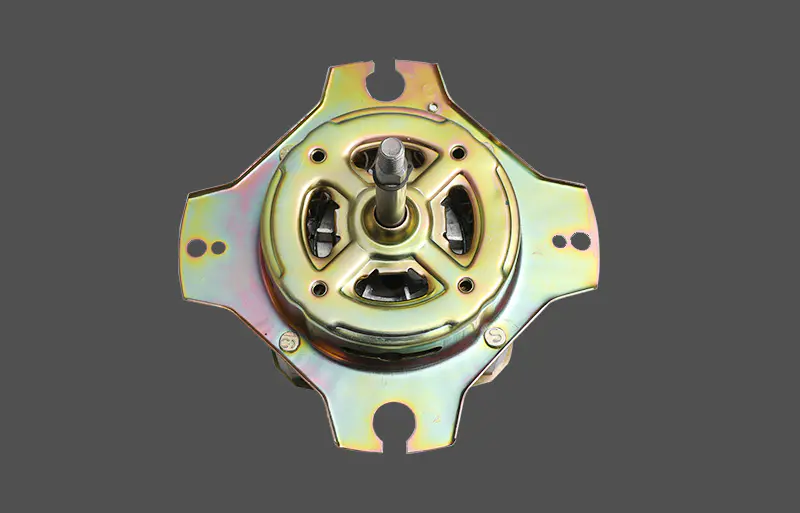
TY002 Powerful & Durable Copper-Wound Washing Machine Motor
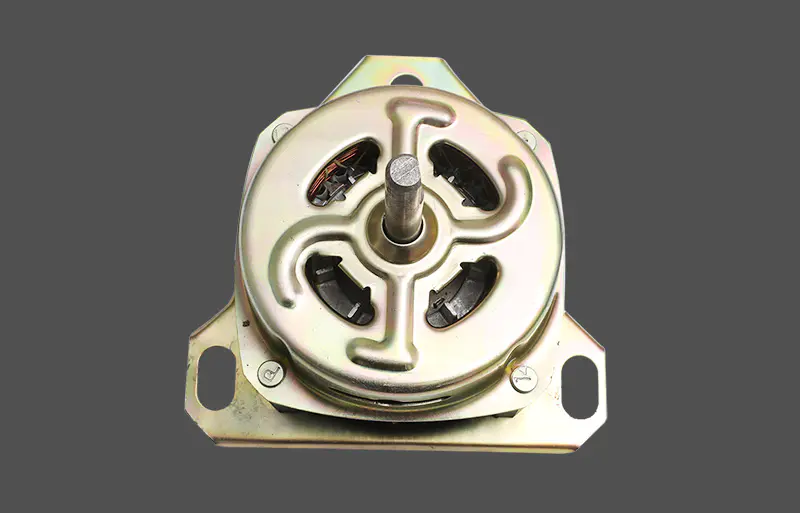
Environmental Cover Washing Machine Motor
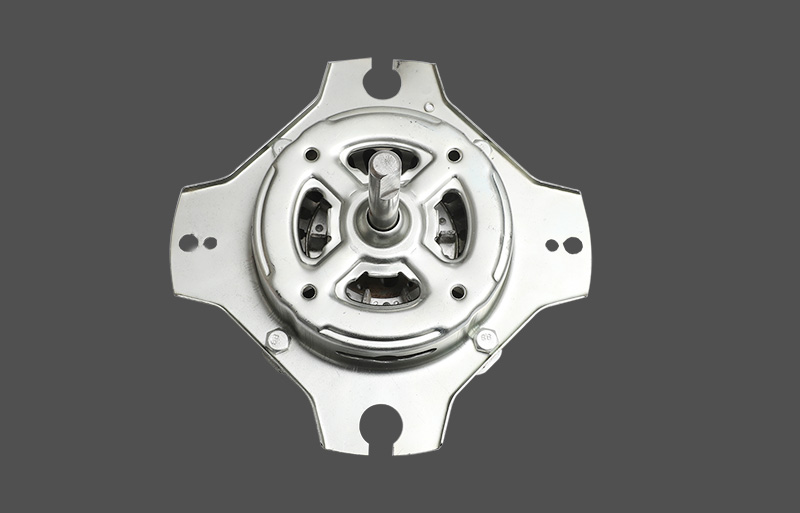
TY004 High-Efficiency Mini Copper Wire Washing Machine Motor
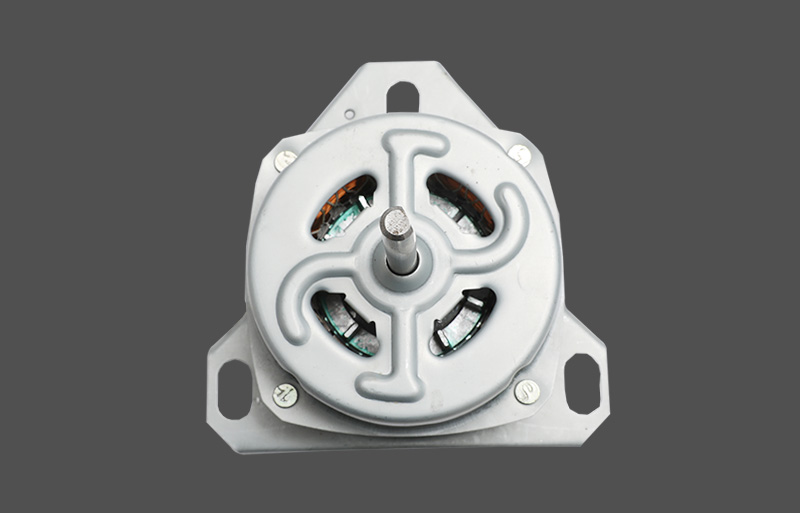
TY005 100% Copper Wire High-Speed Induction Motor
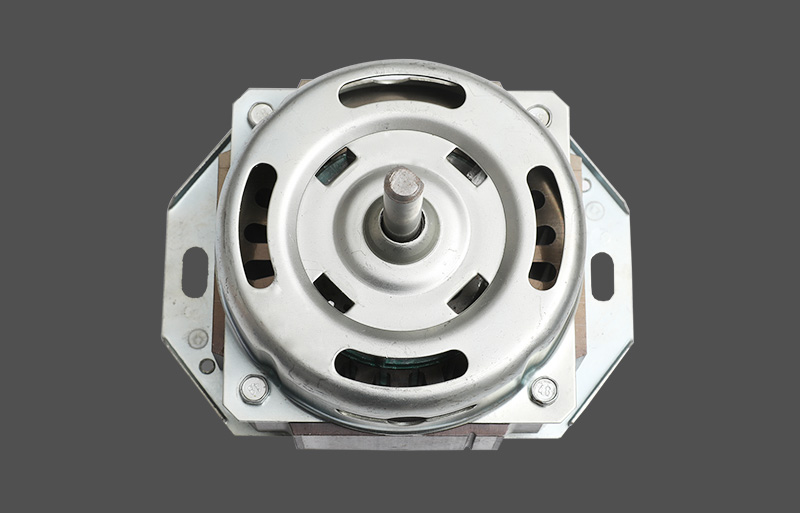
Home Appliance Parts Washing Motor
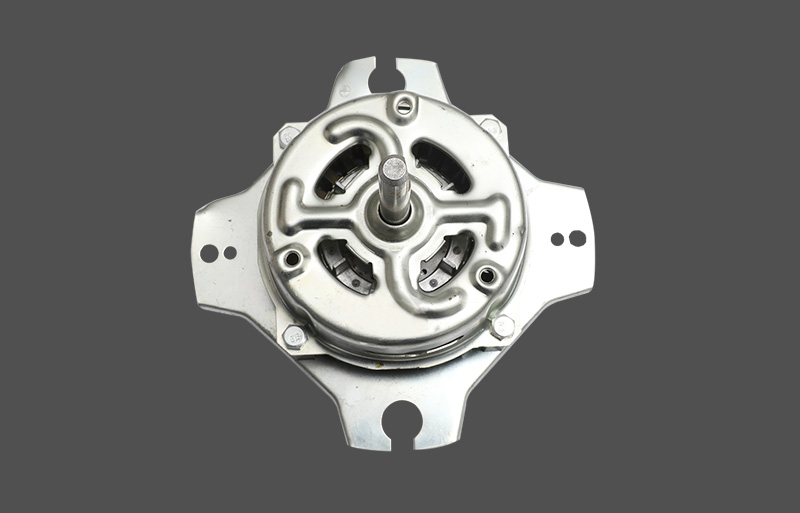
White Color CCA Motor
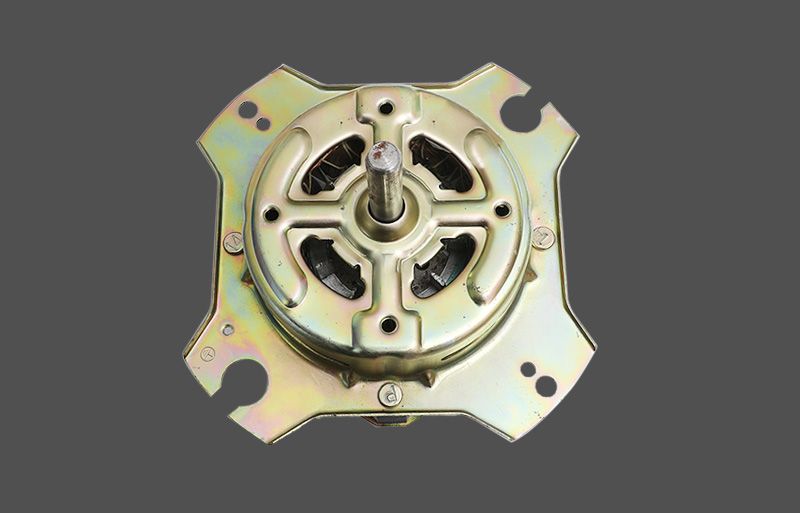
TY-008
Please leave your Email or phone nomber, so we can contact you as soon as possible.